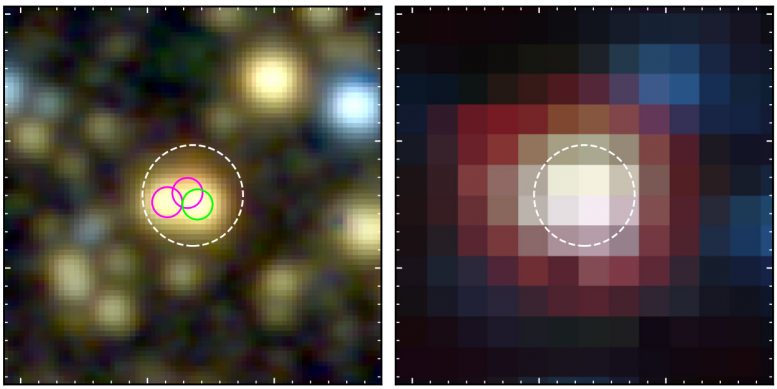CfA astronomers Rafael Martinez-Galarz and Howard Smith and their two colleagues have developed a new statistical analysis technique to address the problem of confused SEDs in clustered environments. Using the highest spatial resolution images for each region, the team identifies the distinguishable stars (at least this many are in the cluster) and their emission at those wavelengths. They combine a Bayesian statistical approach with a large grid of modeled young stellar SEDs to determine the most probable continuation of each individual SED into the blended, longer-wavelength bands and thus lead to the determination of the most likely value of each star’s mass, age, and environmental parameters. The resultant summed SED is not unique but is the most likely solution. The astronomers apply their method to seventy young, low mass stellar clusters observed by the Spitzer Space Telescope’s Infrared Array Camera, and derive their physical properties. Their results are in excellent agreement with general expectations for the distribution of stellar masses. They also find several unexpected preliminary results, including a relationship between the total mass of the cluster and the mass of its largest member. The team plans to extend the wavelength ranges included in their SED analysis and to increase the number of clusters analyzed. Reference: “Unraveling the Spectral Energy Distributions of Clustered YSOs” J. Rafael Martinez-Galarza, Pavlos Protopapas, Howard A. Smith, and Esteban F. E. Morales, The Astrophysical Journal.DOI: 10.3847/1538-4357/aad503
